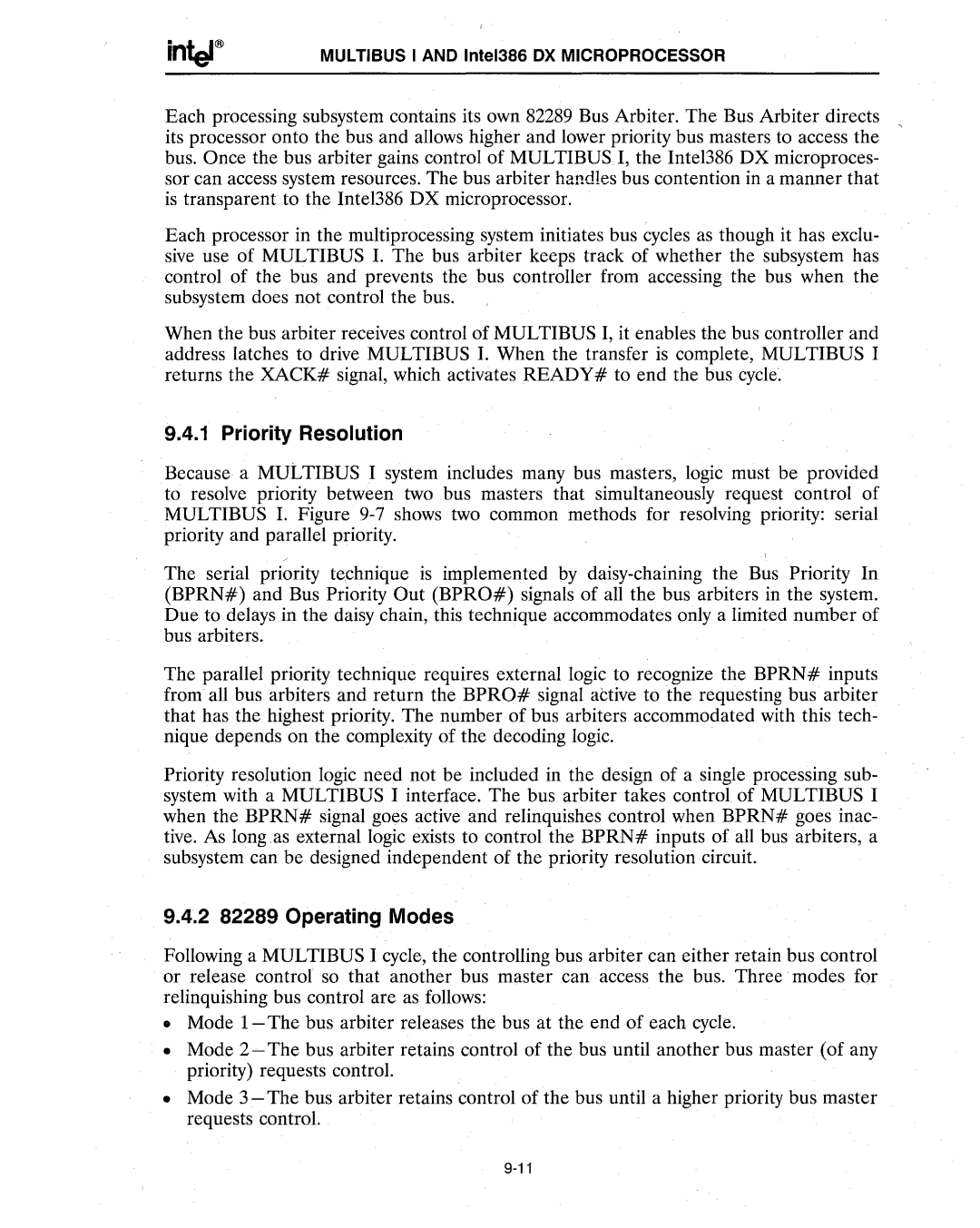
MULTIBUS I AND Intel386 DX MICROPROCESSOR
Each processing subsystem contains its own 82289 Bus Arbiter. The Bus Arbiter directs , its processor onto the bus and allows higher and lower priority bus masters to access the bus. Once the bus arbiter gains control of MULTIBUS I, the Inte1386 DX microproces- sor can access system resources. The bus arbiter handles bus contention in a manner that is transparent to the Intel386 DX microprocessor.
Each processor in the multiprocessing system initiates bus cycles as though it has exclu- sive use of MULTIBUS I. The bus arbiter keeps track of whether the subsystem has control of the bus and prevents the bus controller from accessing the bus when the subsystem does not control the bus.
When the bus arbiter receives control of MULTIBUS I, it enables the bus controller and address latches to drive MULTIBUS I. When the transfer is complete, MULTIBUS I returns the XACK# signal, which activates READY# to end the bus cycle.
9.4.1 Priority Resolution
Because a MUtTIBUS I system includes many bus masters, logic must be provided to resolve priority between two bus masters that simultaneously request control of MULTIBUS I. Figure
~
The serial priority technique is implemented py
The parallel priority technique requires external logic to recognize the BPRN# inputs from all bus arbiters and return the BPRO# signal aCtive to the requesting bus arbiter that has the highest priority. The number of bus arbiters accommodated with this tech- nique depends on the complexity of the decoding logic.
Priority resolution logic need not be included in the design of a single processing sub- system with a MULTIBUS I interface. The bus arbiter takes control of MULTIBUS I when the BPRN# signal goes active and relinquishes control when BPRN# goes inac- tive. As long.as external logic exists to control the BPRN# inputs of all bus arbiters, a subsystem can be designed independent of the priority resolution circuit.
9.4.2 82289 Operating Modes
Following a MULTIBUS I cycle, the controlling bus arbiter can either retain bus control or release control so that another bus master can access the bus. Three modes for relinquishing bus control are as follows:
•Mode
•Mode 2 - The bus arbiter retains control of the bus until another bus master (of any priority) requests control.
•Mode 3 - The bus arbiter retains control of the bus until a higher priority bus master requests control.
